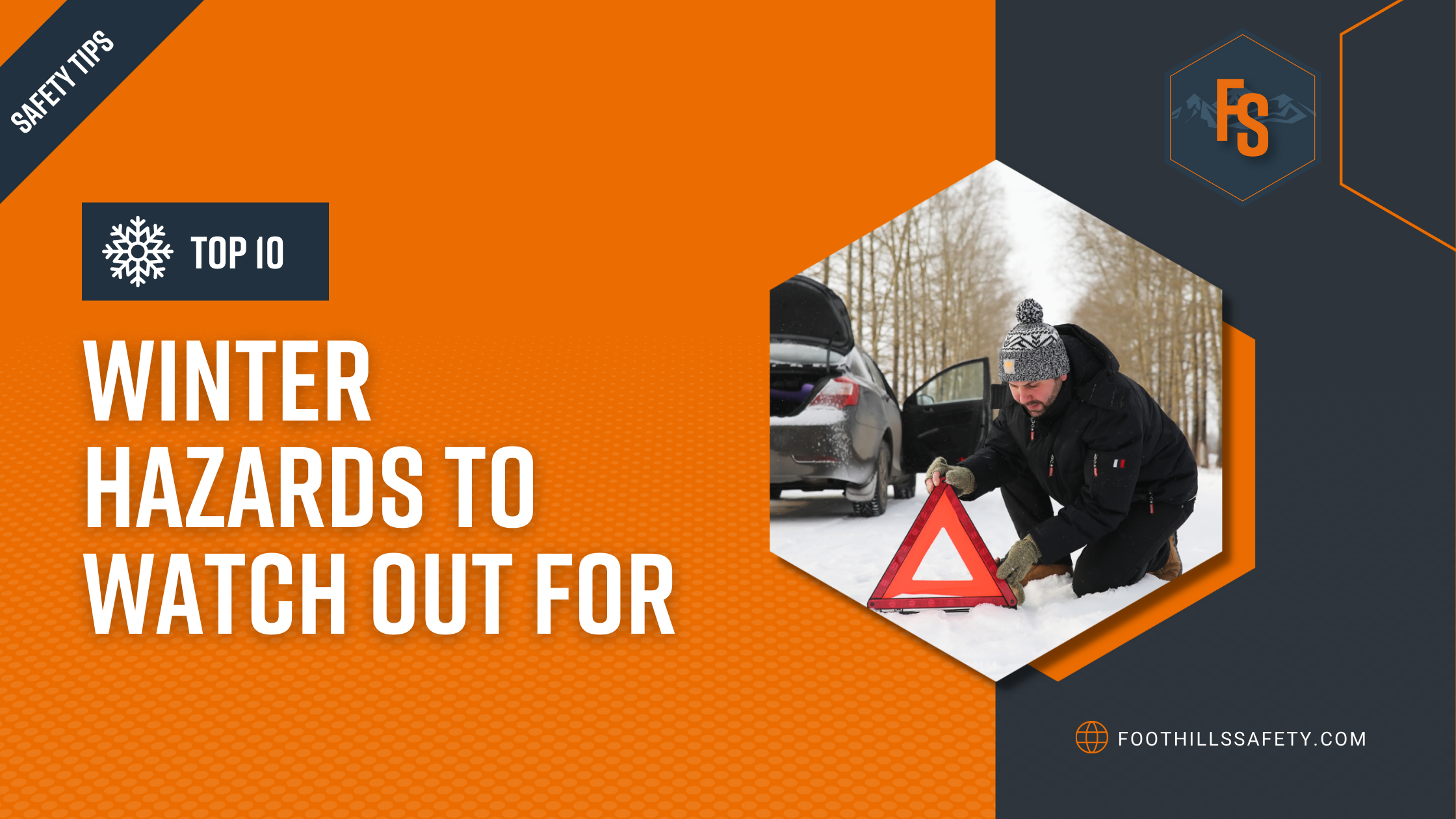Top 10 Winter Hazards to Watch Out For
In 2017, the United States Bureau of Labor Statistics reported over 20,000 winter-related injuries. Slick roads, icy sidewalks and frostbite cause injuries-and if the roads are covered in ice, the patient might not make it to the hospital in time. Watching out for job site hazards prevents accidents and ensures that workers come home safe every night.
Top 10 Winter Hazards to Watch Out For
01 / Icy Roads
Snow, sleet and hail form a sheet of ice on the highway that makes driving dangerous. When you car spins off the road, hitting the brakes won’t make it stop – your car keeps sliding until it hits the guardrail. If your employees can’t reach the job site safely, call off the job for the day or suggest alternate routes.
02 / stranded vehicles
Similarly, if you get stranded on the highway, emergency officials might not reach your vehicle for hours. Darkness, bad weather and rapidly dropping temperatures make it dangerous to wait in the vehicle – but getting out means exposing yourself to the elements. Avoid driving in bad weather whenever possible, especially at night.
03 / Harsh Weather
When you work outside for long periods of time, you put yourself at risk for frostbite and hypothermia. According to Everyday Health, cold weather increases your risk of a heart attack because the cold temperatures narrow your blood vessels. Protect your employees’ health by providing rest areas with adequate heating, and change out of wet clothes as soon as possible.
04 / Slick surfaces
The layer of snow on your driveway or parking lot looks harmless, but that snow might conceal a sheet of ice underneath. Every year, employees slip and fall on icy surfaces, resulting in broken bones, head injuries and torn ligaments. Staircases, ramps and hills are particularly dangerous because of the uneven surfaces. Always treat surfaces before the now and sleet arrive, and avoid wet surfaces that conceal a nearly invisible layer of ice.
05 / Dangerous Heights
For some workers, cold weather means cleaning snow and ice off buildings, removing fallen branches and hanging decorations. Working from a height is dangerous any time of the year, but slick surfaces make it particularly dangerous in winter. One misstep could result in a workplace injury or death. You might have to call of the job if the icy surface is too dangerous.
06 / Strenuous Labor
Shoveling snow, lifting debris and climbing ladders can strain your muscles if you’re not careful. Always follow safety protocols and don’t overexert yourself to complete the job more quickly. One accident could cause permanent injuries. Remind your employees to exhibit the same behaviors.
07 / Downed Power Lines
Strong winds can knock over power lines, cutting the electricity and posing a hazard on the road. Touching a power line could result in electrocution and death. Never touch a power line or anything connect to the line, especially in wet conditions. Similarly, don’t drive across the road – a downed power line is still dangerous even if you’re in the car.
08 / Carbon Monoxide Poisoning
As the temperature drops, you crank up the furnace to ward off the chill. Gas-burning furnaces produce carbon monoxide, which leads to carbon monoxide poisoning in enclosed spaces. Carbon monoxide poisoning produces flu-like symptoms and eventually causes death. Invest in a carbon monoxide detector, and don’t ignore the symptoms even if they seem insignificant.
09 / Car accidents
When the weather gets bad, highway workers clear the roads and block off dangerous areas. Unfortunately, if the driver isn’t paying attention, they could skid off the road and injure a worker. Clearing roads is even more dangerous at night when visibility is low. Use safety equipment like reflective vests, signs and traffic cones to warn drivers about the obstacles ahead.
10 / Insufficient Safety Equipment
Safety equipment like harnesses, eye protection, anti-slip surfaces and warm clothes protect your employees from injuries. Bring everything to the job site even if you don’t think you’ll need it. When the temperature drops, safety equipment can prevent a serious injury.
To keep your employees safe, invest in Foothills Safety online training and certifications. Our safety consultants perform audits and inspections to eliminate hazards from the job site.

